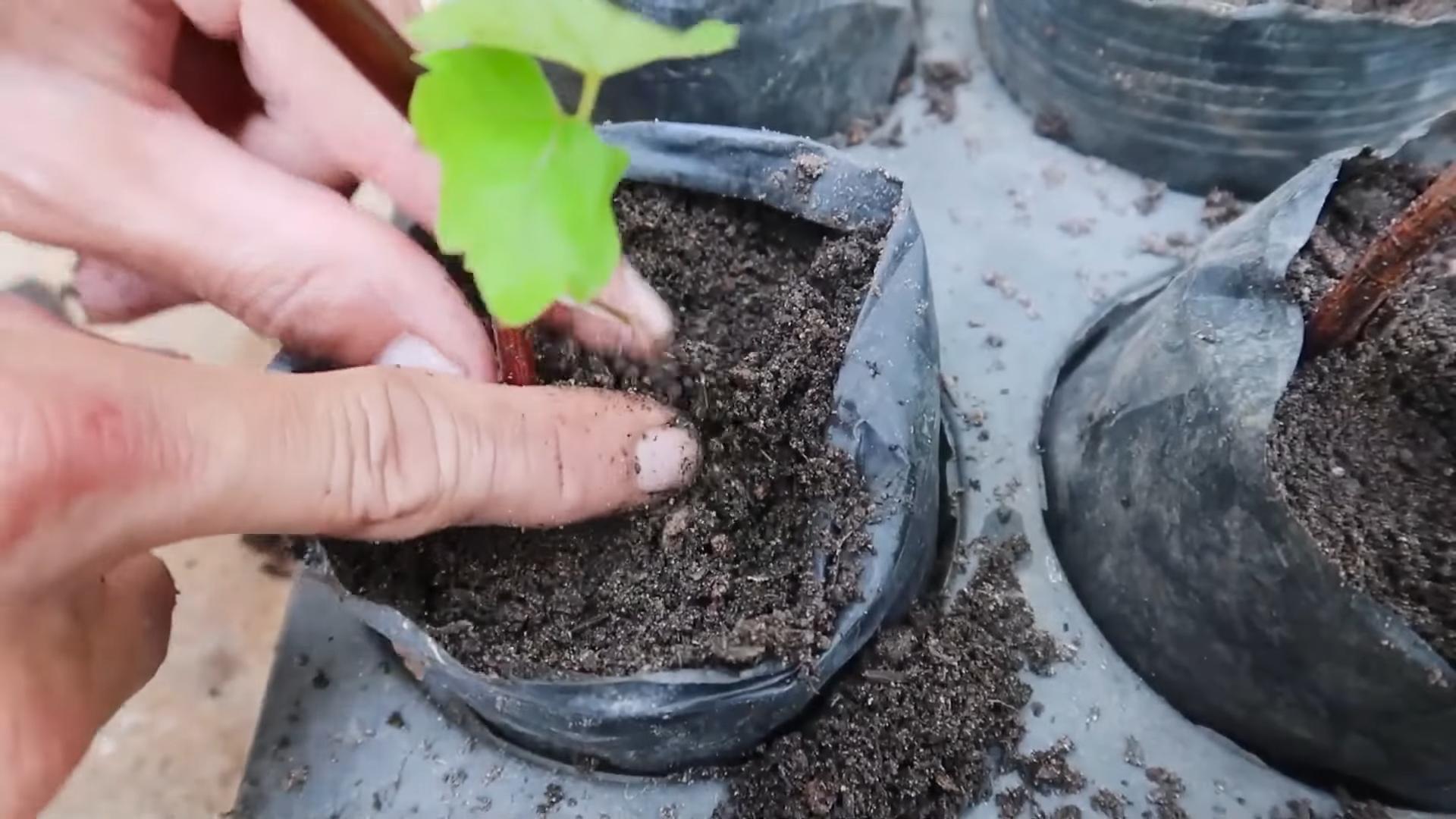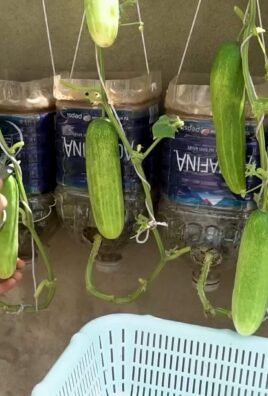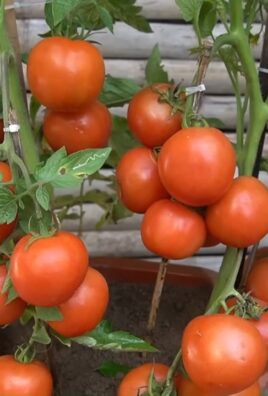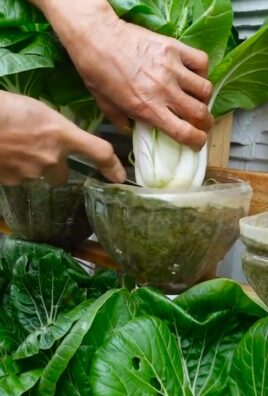Easy to root plants in June? Absolutely! Imagine transforming your home into a lush, green oasis, bursting with life, all thanks to your own green thumb. Forget expensive nurseries and complicated gardening techniques. This month, June, offers the perfect conditions to effortlessly propagate your favorite plants, expanding your collection and sharing the joy of gardening with friends and family.
For centuries, people have relied on simple propagation methods to cultivate gardens and share plant varieties. From ancient Egyptians using cuttings to propagate figs to Victorian gardeners swapping slips of prized roses, the art of rooting plants has a rich history. It’s a tradition that connects us to the earth and allows us to participate in the miracle of life.
But why should you care about easy to root plants in June? Well, let’s be honest, gardening can sometimes feel intimidating. The cost of buying new plants can quickly add up, and the fear of failure can be discouraging. That’s where these DIY tricks come in! I’m going to share some simple, foolproof methods that will empower you to easily propagate your existing plants, saving you money and boosting your confidence. Plus, who doesn’t love the satisfaction of watching a tiny cutting transform into a thriving new plant? Get ready to unleash your inner gardener and create the green space of your dreams!

DIY Propagation Station: Rooting Plants Like a Pro (Even in June!)
Hey plant lovers! Ever wanted to multiply your favorite houseplants without spending a fortune? I’m going to show you how to create a super simple, yet effective, propagation station that will have your cuttings sprouting roots in no time. And yes, even in June, when some plants can be a little more finicky! This method is perfect for plants that root easily in water, like pothos, spider plants, snake plants, and even some herbs. Let’s get started!
What You’ll Need:
* Glass Jars or Vases: Recycled jars are perfect! Think pickle jars, mason jars, or even old candle jars. Just make sure they’re clean. Different sizes are great for different cuttings.
* Clean Water: Tap water is usually fine, but if your tap water is heavily chlorinated, let it sit out for 24 hours before using it, or use filtered water.
* Sharp, Clean Scissors or Pruning Shears: This is crucial to prevent disease and ensure a clean cut.
* Rooting Hormone (Optional): While not always necessary for easy-to-root plants, rooting hormone can speed up the process and increase your success rate, especially in warmer months.
* Plant Cuttings: Choose healthy stems from your “mother” plant.
* Patience: Rooting takes time, so don’t get discouraged if you don’t see roots immediately!
* A Bright, Indirect Light Source: Avoid direct sunlight, which can scorch the cuttings.
Choosing the Right Cuttings
Before we dive into the setup, let’s talk about selecting the best cuttings. This is a key step for success!
* Look for Healthy Stems: Choose stems that are vibrant in color and free from any signs of disease or pests. Avoid stems that are yellowing, wilting, or have spots.
* Node is Key: The most important thing is to make sure your cutting has at least one node. A node is the point on the stem where leaves emerge. This is where the roots will grow from.
* Length Matters: Aim for cuttings that are about 4-6 inches long. This gives them enough energy to develop roots.
* Remove Lower Leaves: Remove any leaves that will be submerged in water. These leaves will rot and can contaminate the water, hindering root growth.
Setting Up Your Propagation Station: Step-by-Step
Okay, now for the fun part! Let’s get your propagation station ready.
1. Prepare Your Jars: Thoroughly wash and dry your chosen jars or vases. This removes any residue that could harm your cuttings.
2. Fill with Water: Fill each jar with clean water, leaving about an inch of space at the top.
3. Prepare Your Cuttings: Using your clean scissors or pruning shears, take cuttings from your chosen plant. Remember to select healthy stems with at least one node.
4. Remove Lower Leaves: Carefully remove any leaves that will be submerged in the water. I usually just pinch them off with my fingers.
5. Apply Rooting Hormone (Optional): If you’re using rooting hormone, dip the cut end of the stem into the powder or gel. Tap off any excess.
6. Place Cuttings in Jars: Gently place each cutting into a jar of water, ensuring that the node(s) are submerged. Make sure the leaves are above the water line.
7. Find the Right Spot: Place your propagation station in a location with bright, indirect light. Avoid direct sunlight, which can overheat the water and damage the cuttings. An east-facing window is often ideal.
8. Monitor and Refresh: Check the water level every few days and add more water as needed. Change the water completely every week or so to prevent algae growth and keep the water fresh.
Troubleshooting and Tips for Success
Even with easy-to-root plants, sometimes things don’t go as planned. Here are some common issues and how to address them:
* Rotting Stems: If you notice the stem of your cutting turning brown or mushy, it’s likely rotting. This can be caused by contaminated water or too much humidity. Remove the rotting cutting immediately and start with a fresh cutting in clean water.
* Slow Root Growth: Root growth can be slow, especially in cooler temperatures. Make sure your propagation station is in a warm, bright location. You can also try using a heat mat to gently warm the water.
* Algae Growth: Algae can grow in the water, especially in bright light. This isn’t necessarily harmful to the cuttings, but it can make the water look cloudy. Change the water more frequently to prevent algae growth. You can also use a dark-colored jar to block out some of the light.
* Yellowing Leaves: Yellowing leaves can be a sign of stress. Make sure your cuttings are getting enough light and that the water is fresh.
* No Root Growth After Several Weeks: If you haven’t seen any root growth after several weeks, try using rooting hormone or taking cuttings from a different part of the plant. Some plants are just more difficult to propagate than others.
Moving to Soil: The Next Chapter
Once your cuttings have developed a good root system (usually about 1-2 inches long), it’s time to move them to soil!
1. Prepare Your Pot: Choose a small pot with drainage holes. Fill it with a well-draining potting mix. I like to use a mix of potting soil, perlite, and vermiculite.
2. Gently Remove Cuttings: Carefully remove the rooted cuttings from the water. Be gentle, as the roots are delicate.
3. Plant the Cuttings: Make a small hole in the potting mix and gently place the rooted cutting into the hole. Cover the roots with soil and gently pat down the soil around the base of the plant.
4. Water Thoroughly: Water the newly planted cutting thoroughly until water drains out of the drainage holes.
5. Provide Humidity: Newly planted cuttings need high humidity to help them adjust to their new environment. You can increase humidity by placing a clear plastic bag over the pot or using a humidity dome.
6. Gradually Acclimate: Gradually acclimate the cutting to lower humidity levels over the next few weeks by removing the plastic bag or humidity dome for increasing periods of time.
7. Care for Your New Plant: Once the cutting has adjusted to its new environment, care for it as you would any other houseplant. Provide bright, indirect light and water when the soil is dry to the touch.
Plants That Love to Propagate in Water
Here are some of my favorite plants to propagate using this method:
* Pothos (Epipremnum aureum): Pothos are incredibly easy to propagate and come in a variety of colors and patterns.
* Spider Plant (Chlorophytum comosum): Spider plants produce “spiderettes” or baby plants that can be easily rooted in water.
* Snake Plant (Sansevieria trifasciata): Snake plants can be propagated from leaf cuttings, although it takes a bit longer.
* Monstera Deliciosa: The ever-popular Monstera is easily propagated from stem cuttings with aerial roots.
* Coleus: Coleus plants root very quickly in water and come in a wide array of vibrant colors.
* Basil: Yes, even herbs like basil can be propagated in water! This is a great way to expand your herb garden.
* Mint: Similar to basil, mint roots readily in water. Be mindful that mint can be invasive, so keep it contained in a pot.
* Wandering Jew (Tradescantia zebrina): Wandering Jew plants are super easy to propagate and add a pop of color to any space.
Why This Works So Well (The Science Behind It!)
Okay, so why does this method work so well? Plants have specialized cells called meristematic cells, which are capable of differentiating into different types of cells, including root cells. When you take a cutting and place it in water, the plant is stimulated to produce these root cells at the node. The water provides the necessary moisture and nutrients for the cells to develop into roots. Rooting hormone contains auxins, which are plant hormones that promote root growth.
Advanced Propagation Techniques (For the Adventurous!)
Once you’ve mastered water propagation, you can explore other propagation techniques, such as:
* Soil Propagation: Directly planting cuttings into moist soil.
* Air Layering: Encouraging roots to grow on a stem while it’s still attached to the mother plant.
* Leaf Propagation: Propagating plants from individual leaves.
Final Thoughts
Propagating plants is a rewarding and cost-effective way to expand your plant collection and share your love of plants with others. With a little patience and the right

Conclusion
So, there you have it! Mastering the art of easy to root plants in June is not just about gardening; it’s about unlocking a deeper connection with nature and experiencing the satisfaction of nurturing new life. This simple yet effective DIY trick offers a cost-effective and rewarding way to expand your plant collection, propagate your favorite varieties, and even create unique gifts for friends and family. Forget expensive propagation equipment or complicated techniques. With just a few readily available materials and a little patience, you can transform cuttings into thriving new plants.
Why is this a must-try? Because it’s accessible to everyone, regardless of their gardening experience. Whether you’re a seasoned green thumb or a complete beginner, this method provides a high success rate, especially during the optimal growing conditions that June offers. The increased sunlight and warmer temperatures create the perfect environment for root development, giving your cuttings the best possible start. Plus, it’s incredibly satisfying to watch those tiny roots emerge and witness the miracle of plant propagation firsthand.
But don’t stop there! Experiment with different types of cuttings. While this method works wonders for many plants, some may respond better than others. Try varying the rooting medium – perhaps a mix of perlite and vermiculite, or even just plain water. You can also explore using different rooting hormones to further boost root growth. Consider the size and type of container you use for rooting. Smaller containers can help retain moisture, while larger containers may provide more space for root development.
Don’t be afraid to get creative and adapt the technique to suit your specific needs and preferences.
We encourage you to embrace this DIY trick and embark on your own plant propagation journey. Imagine the joy of filling your home with lush greenery, all propagated from your own cuttings. Think of the satisfaction of sharing your homegrown plants with loved ones. And consider the environmental benefits of reducing your reliance on commercially grown plants.
The possibilities are endless!
Now, we want to hear from you! Try this easy to root plants in June method and share your experiences with us. What plants did you propagate? What challenges did you encounter? What tips and tricks did you discover along the way? Your feedback will not only help us improve this guide but also inspire other gardeners to give it a try. Share your photos, stories, and insights in the comments section below. Let’s create a community of plant propagators and spread the joy of gardening together!
Remember, gardening is a journey, not a destination. Embrace the learning process, celebrate your successes, and don’t be discouraged by occasional setbacks. With a little patience and persistence, you’ll be amazed at what you can achieve. So, grab your cuttings, gather your supplies, and get ready to experience the magic of plant propagation! Happy gardening!
Frequently Asked Questions (FAQ)
What types of plants are easiest to root in June using this method?
June is an excellent month for propagating many plants due to the favorable growing conditions. Some of the easiest plants to root during this time include:
* Herbs: Basil, mint, rosemary, lavender, and oregano are all relatively easy to root from stem cuttings in June.
* Succulents: Many succulents, such as sedums, echeverias, and crassulas, root readily from leaf or stem cuttings.
* Flowering Plants: Hydrangeas, roses (especially softwood cuttings), geraniums, and fuchsias can be successfully propagated in June.
* Houseplants: Pothos, philodendrons, snake plants, and ZZ plants are known for their ease of propagation from stem cuttings.
* Shrubs: Butterfly bushes, forsythia, and viburnum can also be propagated from softwood cuttings taken in June.
However, it’s important to research the specific propagation requirements of each plant species to ensure the best results.
How do I choose the right cuttings for propagation?
Selecting healthy and vigorous cuttings is crucial for successful propagation. Look for stems that are free from pests, diseases, and damage. Choose stems that are actively growing but not flowering. The ideal cutting length is typically 4-6 inches. Use clean, sharp pruning shears or a knife to make a clean cut just below a node (the point where a leaf or branch emerges from the stem). Remove the lower leaves from the cutting to prevent them from rotting in the rooting medium.
What is the best rooting medium to use?
Several rooting mediums can be used successfully, depending on the plant species and your personal preference. Some popular options include:
* Water: Simple and effective for many plants, especially those that root easily. Change the water every few days to prevent bacterial growth.
* Potting Mix: A well-draining potting mix is suitable for many plants. Make sure the mix is moist but not waterlogged.
* Perlite: Perlite provides excellent aeration and drainage, which is beneficial for root development.
* Vermiculite: Vermiculite retains moisture and nutrients, which can help promote root growth.
* A Mix of Perlite and Vermiculite: This combination provides both aeration and moisture retention.
Experiment with different rooting mediums to see what works best for your plants.
Do I need to use rooting hormone?
While not always necessary, rooting hormone can significantly increase the success rate of propagation, especially for plants that are more difficult to root. Rooting hormone contains auxins, which are plant hormones that stimulate root development. Apply the rooting hormone to the cut end of the stem before placing it in the rooting medium. Follow the instructions on the rooting hormone package for proper application.
How often should I water the cuttings?
The frequency of watering depends on the rooting medium and the environmental conditions. The goal is to keep the rooting medium consistently moist but not waterlogged. Check the moisture level regularly by inserting your finger into the medium. If it feels dry, water gently. Avoid overwatering, as this can lead to root rot.
How much light do the cuttings need?
Cuttings need bright, indirect light to promote photosynthesis and root development. Avoid placing them in direct sunlight, as this can scorch the leaves. A location near a window with filtered light is ideal. You can also use grow lights to supplement natural light, especially during periods of low light.
How long does it take for roots to develop?
The time it takes for roots to develop varies depending on the plant species, the rooting medium, and the environmental conditions. Some plants may root in a few days, while others may take several weeks. Be patient and monitor the cuttings regularly for signs of root growth. You can gently tug on the cutting to check for resistance, which indicates that roots have formed.
How do I know when the cuttings are ready to be transplanted?
Once the cuttings have developed a healthy root system, they are ready to be transplanted into individual pots. The roots should be at least 1-2 inches long. Gently remove the cuttings from the rooting medium and plant them in well-draining potting mix. Water thoroughly after transplanting and provide them with bright, indirect light.
What are some common problems I might encounter, and how can I fix them?
Some common problems that can occur during propagation include:
* Rotting: This is usually caused by overwatering or poor drainage. Ensure that the rooting medium is well-draining and avoid overwatering. Remove any rotting leaves or stems immediately.
* Lack of Root Growth: This can be caused by insufficient light, improper rooting medium, or lack of rooting hormone. Ensure that the cuttings are receiving adequate light, use a suitable rooting medium, and consider using rooting hormone.
* Pests and Diseases: Monitor the cuttings regularly for signs of pests or diseases. Treat any infestations or infections promptly with appropriate pesticides or fungicides.
Can I propagate plants in June outdoors?
Yes, you can propagate plants outdoors in June, but it’s important to protect the cuttings from direct sunlight and extreme temperatures. A shaded area or a greenhouse is ideal. You can also use a humidity dome or plastic bag to create a humid environment, which can help promote root growth.





Leave a Comment